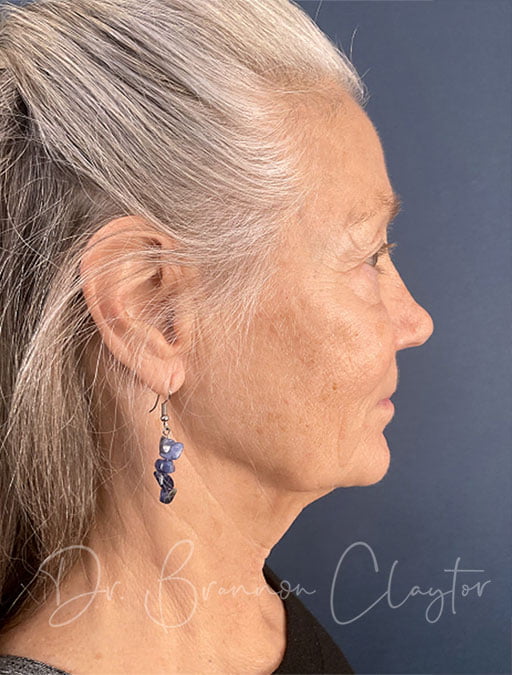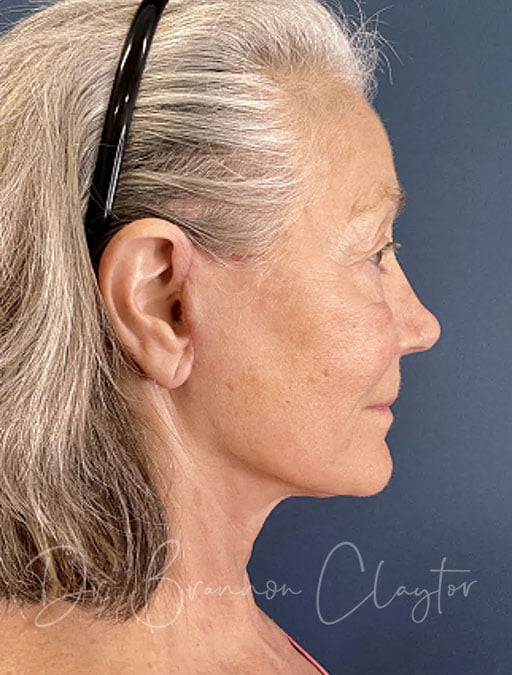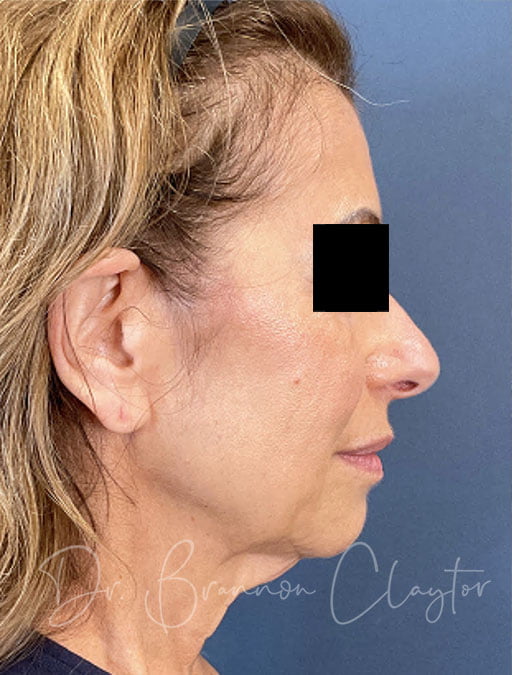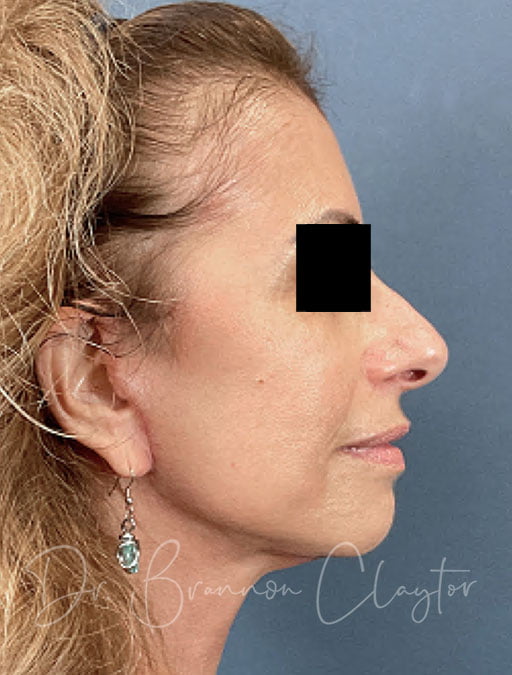The Benefits of an “Awake” Facelift

As a deep plane facelift specialist and internationally-renowned plastic surgery educator, Dr. Brannon Claytor has adopted many advancements in facelift technique over the years. One of the most significant, yet not widely discussed, is the ability to undergo a facelift while you are awake.
What is an awake facelift?
An “awake” facelift is performed using only oral medication for relaxation and tumescent anesthesia to numb the surgical area. Instead of putting you completely asleep under general anesthesia, this puts you in a relaxed state, where you are still responsive. Tumescent anesthesia involves the injection of a local anesthetic directly into the surgical area for numbing.
While Dr. Claytor offers facelifts under general anesthesia as well, he has found that nearly 90% of women and men prefer this “awake” facelift experience.


This patient underwent a deep plane facelift with Dr. Brannon Claytor.
*Individual results may vary on a case-by-case basis
Dr. Claytor’s facelift approach
Your facelift surgery technique will be fully customized for you, and it will be the same whether you are awake or asleep. During the consultation, Dr. Claytor will examine your areas of concern and talk with you to learn about your goals. For most patients, he recommends the deep plane facelift technique to lift the skin and underlying muscles of the face and smooth jowls, tighten crepe-like skin in the neck, and create a well-defined jawline. Many patients choose to combine their Philadelphia facelift with laser skin resurfacing with nanofat and microneedling (Dr. Claytor’s proprietary LaMiNa technique), a lip lift, or upper face procedures like eyelid lift for an evenly youthful appearance.
Benefits of Choosing an Awake Facelift
1. Quicker recovery time
One of the immediate benefits of an awake facelift is a streamlined recovery process. General anesthesia can leave you feeling groggy and disoriented for several days post-operation, and can have side effects like nausea and a sore throat. After general anesthesia, you will need someone to stay with you for at least 24 hours.
On the other hand, local tumescent anesthesia wears off more quickly, allowing you to feel like yourself sooner. This means you can return to your daily activities around the house, like cooking for yourself, within 24-48 hours after your procedure, without the prolonged downtime—just be sure to follow Dr. Claytor’s instructions for resting, limiting strenuous activities and exercise, and wearing compression garments.
2. Reduced risk of complications
General anesthesia, while safe for most patients, carries a slightly higher risk of complications, especially for those with certain health conditions. By opting for local anesthesia, you can avoid these risks. In general, this approach is gentler on the body, reducing the likelihood of adverse reactions and complications.
General anesthesia carries a slightly higher risk of complications; by opting for local anesthesia, you can avoid these risks.
3. No discomfort during the procedure
You may worry that being “awake” could mean feeling pain or discomfort during the facelift. However, numbing injections and oral medication for relaxation, can help you remain comfortable throughout the procedure. If you experience any discomfort, our surgical team can adjust your dosage of medication as needed to keep you comfortable for the entire process.
4. Cost-effectiveness
General anesthesia often requires additional monitoring equipment and time with an anesthesiologist, which can increase the overall cost of the procedure. An awake facelift can be a more cost-effective option without compromising the quality or results of the surgery. (In either case, we offer financing options to help break down the cost into monthly payments.)
5. Responsiveness during surgery
Being awake allows you to talk with Dr. Claytor during the procedure. Not only does this help us ensure that you remain comfortable, but your responsiveness and ability to move your body can assist the surgical team, as needed, for optimal surgical access and results.
For example, if you choose to have facial fat grafting in combination with your facelift, it can be especially helpful to be able to reposition your body for (step 1) liposuction and for (step 2) reinjecting the fat into the face.


Regardless of the details of your facelift surgical plan, Dr. Claytor offers patients both general anesthesia and local anesthesia with sedation.
*Individual results may vary on a case-by-case basis
Is an awake facelift right for you?
While the awake facelift offers numerous benefits, you need to be a good candidate for a facelift before undergoing the procedure with either kind of anesthesia. Ideal candidates are those who:
- Are in good overall health
- Do not smoke or use nicotine
- Have realistic expectations about the outcomes of facelift surgery, as discussed with Dr. Claytor in your consultation
- Have set aside sufficient time for a restful, safe recovery after surgery (i.e. no immediate travel plans)
- Prefer a more streamlined, mobile recovery period
- Wish to avoid general anesthesia
During your consultation, you and Dr. Claytor will discuss your medical history, aesthetic goals, and address concerns you may have. Dr. Claytor believes that the choice of anesthesia should be made in collaboration with you, just as he works with you to develop a surgical plan based on your goals for your appearance—not a cookie-cutter set of changes.
Dr. Brannon Claytor holds years of experience in both traditional and awake facelifts, and he is an international leader and educator in the deep plane face and neck lift technique—an advanced method that creates a defined jawline and transformative, yet natural-looking, results for facelift patients at any age. He is an 8x Philadelphia Magazine Top Doctor Winner, Chief of Plastic Surgery at Main Line Health, and one of Newsweek’s America’s Best Plastic Surgeons. We invite you to schedule your consultation today by calling 610-527-4833!
